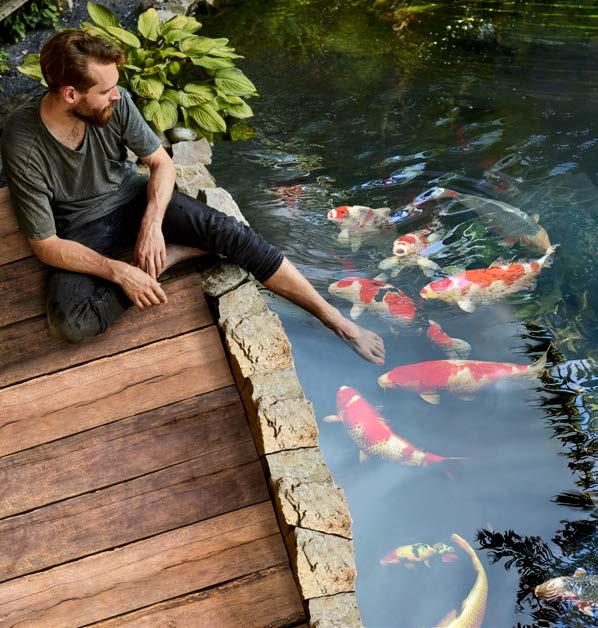

The Koi Experience
Table of Contents
Page 3 Why Create a Pond?
Page 5 Chapter 1: Koi and Their Needs
Page 8 Chapter 2: Designing the Koi Pond
Page 12 Chapter 3: Ideal Placement
Page 15 Chapter 4: Excavation & Materials Needed
Page 19 Chapter 5: Filtration & Pond Technology
Page 23 Chapter 6: Additional Systems for Perfect Water
Page 28 Chapter 7: Koi Feeding and Care
Page 32 Chapter 8: Pond Maintenance
Page 35 Chapter 9: Common Mistakes to Avoid
Page 38 Final Thoughts & Contact
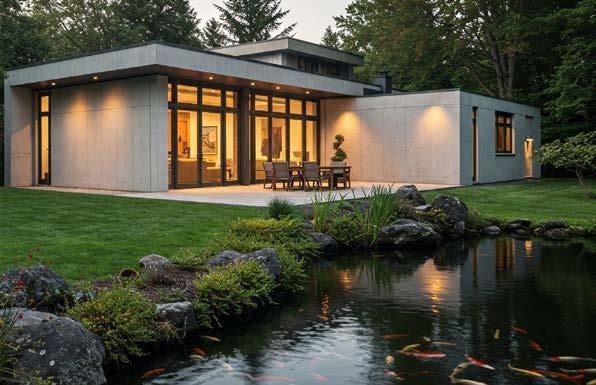
Why Create a Pond?
“A pond is where time slows. It’s where you breathe differently. And it’s where the world, just for a moment, feels perfectly balanced.”
Yvo de Wal, The Koi Partner
A Living Sanctuary
A Koi pond is not just a decorative feature – it’s a vibrant, flowing ecosystem that blends science, serenity, and design. It invites you to pause, observe, and care. Every ripple, every color, every silent movement tells a story of balance between man and nature.
Whether you‘re looking to create a peaceful personal retreat or make an aesthetic statement in your garden, a Koi pond offers value far beyond the visual.
Why Build a Koi Pond?
Reconnect with Nature – Build a space where birds, plants, and peaceful reflections meet.
Bring Art to Life – Koi are living sculptures – moving, shimmering, endlessly changing.
Care for Intelligent Creatures – Koi recognize their keepers and form relationships over time.
Create an Ecosystem – A well-designed pond becomes self-balancing with minimal input.
Rediscover Ritual – Feeding becomes meditation. Observation becomes presence.
Boost Property Value – A beautifully integrated pond becomes the crown jewel of any landscape.
Did You Know?
Koi are one of the only fish that can be trained to eat from your hand –and some can live over 40 years with proper care. That means your pond isn’t just a feature – it’s a legacy.
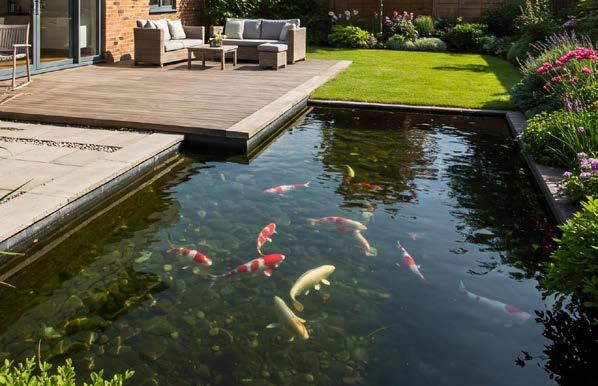
Koi and Their Needs
“Koi don’t speak – but they say everything with how they swim. Watch them long enough, and they’ll teach you patience, presence, and the beauty of subtlety.”
Martin Kammerer, Konishi Koi Farm
More Than Fish – Symbols of Serenity
Koi are not just aquatic pets. They are living art, flowing with grace and deep-rooted symbolism – representing perseverance, peace, and prosperity across cultures.
But behind the mesmerizing colors and fluid motion is a delicate biology that demands thoughtful care. When you care for a Koi pond, you’re not just feeding fish – you’re nurturing balance.
Main Varieties of Koi
Let's meet the most celebrated color variations of Koi – each with its own flair, energy, and symbolic meaning.
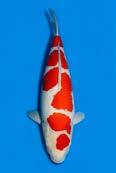
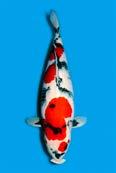
Kohaku White base with deep red markings. Simple, pure, and timeless. The most iconic of all Koi.

Showa Black-bodied with dynamic red and white. Bold and dramatic –pure visual power.
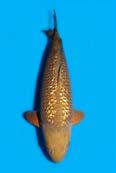
Sanke A white Koi with red and black accents. Graceful, balanced, and elegant in movement.
Chagoi Green-brown to copper shades. Friendly and interactive – the “gentle giant” of the pond.
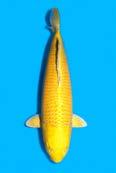

Ogon Golden, platinum, or silver metallic finish. Symbolizes wealth, clarity, and confidence.
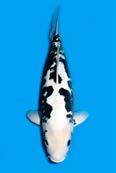
Shusui
Reflective bluegrey with scaleless sides. Rare and striking –like a watercolor painting in motion.
Bekko
Solid base with scattered black spots. Calm, yinyang energy –often underrated.
Yvo’s Tip
“Koi are honest. When they’re thriving, you’ll know. And when something’s off, they’ll show you. That’s the beauty – they keep you connected to the water, and to the moment.”

Did You Know?
Some Koi can be taught to ring a bell for food. Others follow their owners around the pond. They‘re more than decorative – they’re emotional, social, and even trainable.
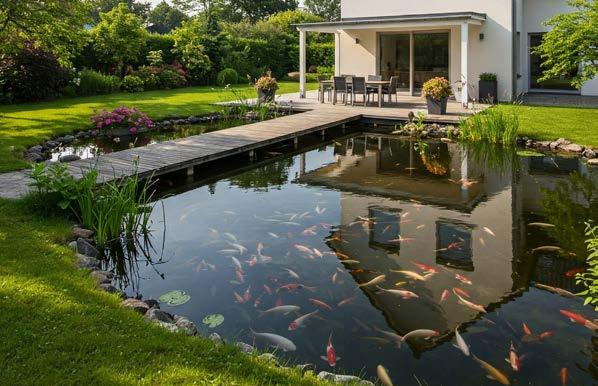
Designing the Koi Pond 2
“Designing a Koi pond is like composing a piece of music – every depth, curve, and line should flow together to support life and serenity.”
Yvo de Wal, The Koi Partner
Where Vision Meets Function
Design is more than shape – it’s the choreography of water, fish, filtration, and peace. A truly successful Koi pond is beautiful to look at, but effortless to maintain. That happens when form follows biology.
From scale to slope to filtration zones, every decision during planning will ripple through the long-term health of your pond. Let’s get it right from the ground up.
Pond Size & Design Recommendations
Your pond’s size determines not just how many Koi you can keep – but how easy it is to care for, how water behaves, and what technology you’ll need to support it.

Small & Smart
1,500 - 4,500 gallons
• Ideal for small gardens or first-time Koi keepers
• Holds up to 4 – 5 Koi (depending on size)
• Minimum depth: 4 feet – vital for stable water temps
• Requires high-performance filtration, oxygenation, and attention to feeding
• Easier to install yourself, but needs tighter weekly maintenance routines
4,500 - 6,500 gallons
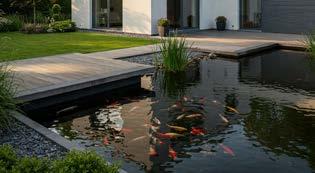
Balanced & Manageable
• Sweet spot for intermediate pond owners
• Comfortably holds 8–12 Koi
• Recommended depth: 5 feet for better thermal regulation
• Allows for modular tech (drum filters, skimmers, UVCs)
• Perfect size for building confidence in long-term care

6,500 - 10,000 gallons
Showcase Quality
• For advanced hobbyists looking to raise 20+ show-quality Koi
• Depth: 6 feet or deeper for ideal oxygen stratification
• More complex planning required (bottom drain, moving bed, surface skimmer)
• Best executed with consultation or professional input
10,000 - 25,000 gallons

Professional-Level Masterpiece
• Statement ponds designed for growth, breeding, or display
• Can accommodate dozens of large Koi with ample movement room
• Requires robust, modular filtration and smart pump systems
• Integrated aeration, UVC, and tech automation essential
• The pinnacle of Koi culture – where aquatic design becomes legacy
Yvo’s Tip
“The biggest mistake people make in design? They focus only on what they see. But it’s what happens below the surface – filtration, circulation, oxygenation – that makes a pond truly sustainable.”

Did You Know?
A deeper pond (6'+) doesn’t just protect Koi from freezing winters or boiling summers –it also slows algae growth by reducing sunlight penetration.
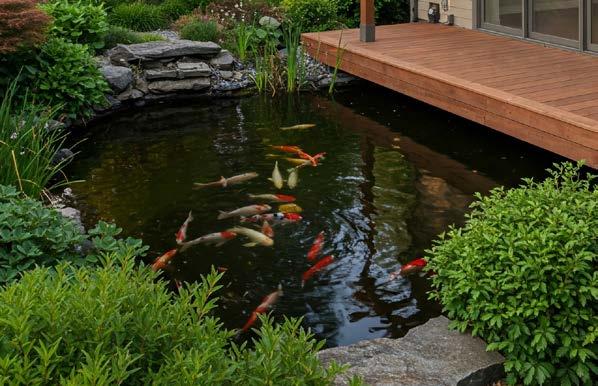
Ideal Placement
“The best place for your pond isn’t just where it fits – it’s where it becomes part of your life. A pond should be seen, heard, and felt.”
Martin Kammerer, Konishi Koi Farm
The Power of Placement
Designing the pond is one thing – placing it is another. Where you build it determines how easily you’ll care for it, how well your fish thrive, and how often you actually enjoy it. Good placement turns a water feature into a lifestyle.
Think of it as the pond’s compass: guiding light, temperature, debris flow, and interaction.
Landscape Considerations
Best Practices
CHECK-CIRCLE Partial sunlight with afternoon shade
CHECK-CIRCLE Nearby seating areas for daily viewing
CHECK-CIRCLE Open air with light breeze
CHECK-CIRCLE Natural slope for drainage away from pond
Technical Considerations
What to Avoid
CIRCLE-XMARK Full, unfiltered sun all day
CIRCLE-XMARK Hidden, hard-to-access corners
CIRCLE-XMARK Sheltered dead zones with stale air
CIRCLE-XMARK Low-lying spots prone to runoff
• Close to utilities – Keep pumps, filters, and UVCs within reach of power and water.
• Reserve an equipment or utility zone – You’ll need room for valves, filters, drums, and storage.
• Allow walk-around access – Maintenance is part of the process. Make it enjoyable, not frustrating.
• Watch the terrain – Avoid areas where rain can flood the system with contaminants.
• Protect cables and plumbing – Plan trenching before excavation to prevent late-game reroutes.
Yvo’s Tip
“If you can see it from your favorite chair, feed your fish without tiptoeing over shrubs, and shade the water by design – you’ve nailed placement. It’s that simple.”

Did You Know?
A poorly placed pond can increase algae growth, stress your fish, and cause costly retrofits within the first year. Planning placement right from the start can save you thousands – and hours of frustration.
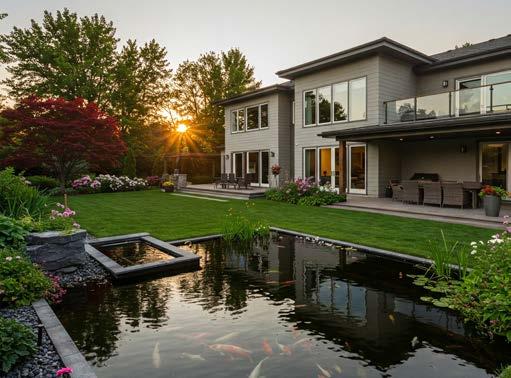
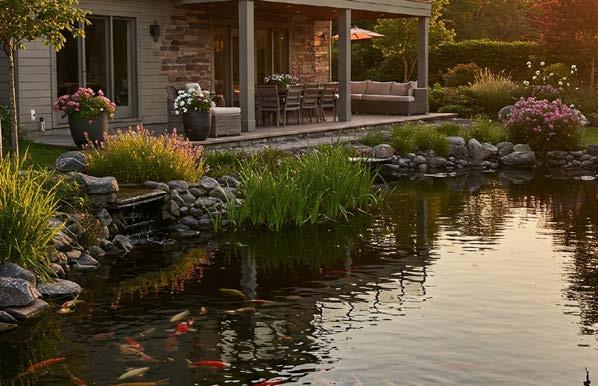
Excavation & Materials
Needed
“As an expert in the world of Koi keeping, I can confidently say that the quality of excavation and materials used in building a pond is crucial for the long-term health of the fish. Without these foundational elements, a pond simply can‘t reach its full potential.”
Yvo de Wal, The Koi Partner
Dig with Purpose
Don't just dig a hole – design your ecosystem from the bottom up:
Mark your layout
Roots & rocks – anything that could pierce your liner must go. 1 2 3 4
Use spray paint, rope, or hose to sketch the pond’s outline. Organic shapes look more natural, but strong geometric lines can work well also.
Create depth zones
Dig in levels to support pond life and plant diversity:
• Shallow shelf (10–15 inches) for water plants
• Mid-tier (24–32 inches) for fish movement and oxygenation
• Deep zone (4–6 feet) for Koi habitat and wintering
Slope the bottom
A 1–2% slope toward a bottom drain helps organic debris migrate naturally to the lowest point – making maintenance much easier later.
Remove sharp objects
Layer Like a Pro
Think of these layers as the foundation of your pond’s longevity:
Sand base (2 - 4 inches)
Adds cushioning and levels out imperfections beneath the liner.
Geotextile Underlayment
This is your invisible hero. It protects the liner from punctures and wear – especially over time with shifting soil.
Liner
Choose the right one based on shape, size, and durability needs:
EPDM Liner: Long-lasting, highly flexible, UV resistant – ideal for freeform or complex ponds.
PVC: Budget-friendly for simpler shapes, though less UV stable over time.
Finishing edges
Use natural stone, wooden decking, or gravel to pin down the liner, blend the pond into its surroundings, and give it that finished feel.
Pro Tips
• Precision during excavation, the use of underlayment and a fish-grade, professional liner is very important
• Compact the earth beneath your shelves or add retaining walls to avoid collapse.
• Want crystal-clear water from day one? Plan for a central bottom drain connected to your mechanical filter system and properly specifiy equipment for a Clear Water Guarantee.
Did You Know?
Precision during the excavation - like using underlayment liner - is very important to avoid leaks and ongoing headaches. A flawless build is required.
Feel up for the challenge or need support? Our landscape partners and experts in koi pond building will help you realize your koi pond dream.
Find your local landscaper: www.atlantic-oase.com/find-an-installer

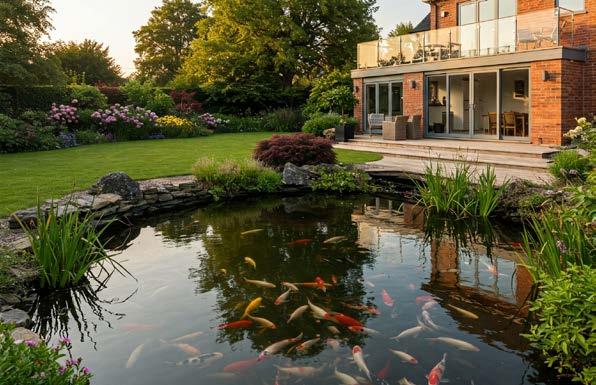
Filtration & Pond Technology
“You can’t have healthy fish in dirty water. It’s that simple. A pond is a living system – and filtration is its heartbeat.”
Martin Kammerer, Konishi Koi Farm
Why Clean Water Means Better Koi
Health & longevity: Koi grow faster, shine brighter, and live longer.
Stable ecosystem: Encourages beneficial bacteria that do the heavy lifting.
Visual impact: Crystal-clear water shows off your Koi like the living art they are.
Why Filtration Is Critical
Without effective filtration, your pond turns into a slow-moving disaster. Organic waste builds up. Oxygen drops. Water clarity vanishes. And your Koi? Stressed, sick, or worse.
The Risks of Unfiltered Water
Toxin overload: Ammonia and nitrites accumulate, damaging gills and nerves.
Algae blooms: Water turns green, visibility drops, and oxygen gets depleted overnight.
Bacterial outbreaks: Pathogens thrive in stagnant, dirty water.
Foul smells & murkiness: Goodbye serenity. Hello sludge.
What Filtration Does For You
Removes debris: Leaves, uneaten food, fish waste – all pulled before they rot.
Balances chemistry: Keeps ammonia and nitrites from poisoning your fish.
Prevents illness: Bad water leads to bacterial outbreaks and weak immunity.
Sustains oxygenation: Supports Koi respiration and healthy bacterial colonies.
Yvo’s Tip
“A Koi pond without good filtration is just a muddy hole with expensive fish. Your filter is your peace of mind – invest in it like you would your own health.“

Drum Filter Spotlight: Oase ProfiClear Premium Compact
This is your mechanical first line of defense. The Oase ProfiClear Premium Compact is a fully automated drum filter that traps even the smallest particles – without you ever lifting a net.
How It Works:
• Water enters the drum, passing through ultra-fine mesh (60-80 microns).
• Debris sticks to the mesh – leaves, waste, uneaten food.
• Sensor detects clogging and triggers auto-clean mode.
• High-pressure jets clean the mesh, flushing debris into a waste channel.
• Clean water moves into the moving bed chamber.
Key Benefits:
• Ultra-fine filtration – removes particles before they decay
• Fully automated – saves you hours every week
• Protects biological media – keeps your moving bed from clogging
• Built for large ponds – serious clarity, minimal effort
• Clear Water Guaranteed - properly sized filtration delivers clear water every time
The Biological Brain: Oase Moving Bed Filter
This is where chemistry becomes life support. The Moving Bed filter is a dynamic zone where billions of bacteria break down ammonia and nitrites into harmless compounds.
Yvo’s Tip
“If you want Koi without the chaos, start here. The ProfiClear’s automation pays for itself in peace and water quality.“

How It Works:
• Floating Hel-X biomedia provides massive surface area.
• Aerators keep the media constantly moving – oxygen-rich and self-cleaning.
• Bacteria colonize the media, creating a living water treatment plant.
• Two-step process:
Nitrification: Ammonia > Nitrite > Nitrate (Optional) Denitrification: Under specific conditions, further nitrate reduction
Why It’s Essential:
• High biological load = safe water for growing Koi
• Self-regulating and scalable
• Doesn’t clog like static filters
• Supports aerobic bacteria and water oxygenation
The Dream Team: ProfiClear Premium Compact, Bitron C & AquaMax Eco Premium
When paired with an AquaMax Eco Premium pump and Bitron C UVC, the ProfiClear system becomes a bulletproof backbone for your pond. This combination, with proper sizing, guarantees clear water.
• Intelligent safety tech: Run dry & clog detection
• High volume flow = rapid turnover
• Automatic cleaning cycles + app monitoring = less manual work
Did You Know?
Proper filtration can cut your water changes in half and extend the life of your Koi by decades. Cleaner water = less toxins, happier fish and way more joy.

Additional Systems for Perfect Water
“Filtration is essential – but it’s the supporting systems that make a pond truly effortless. Every good pond has a hidden rhythm. These are the tools that keep it flowing.”
Yvo de Wal, The Koi Partner
The Right Pump = The Right Flow
Pumps are the workhorses of your pond. They keep water moving through your filtration system, prevent stagnation, and help oxygen reach your Koi.
How to Choose:
• Pond Volume: Your pump should circulate the pond volume at least once every 30–60 minutes.
• Head Height: If you‘re pushing water uphill (e.g., to a waterfall or raised filter), you’ll need more power.
• Energy Efficiency: Look for smart pumps that adjust flow and reduce operating costs.
• Debris Handling: Koi ponds demand pumps that can manage leaves, sludge, and small waste particles.
Top Pick: OASE AquaMax Series


Budget-friendly, perfect for small/medium ponds
Benefits:
• Reduced energy bills
• Handles debris with ease
• Durable, weatherproof design
• Smart sensor tech in top models
Energy-saving with smart flow control & 7/16" debris handling

Built for large volumes and pro-level systems
UVC Clarifiers – For Crystal Clear Water
UVCs treat the hidden threats: suspended algae, pathogens, parasites, and bacteria that make your water murky and stress your fish.
Why It Matters:
• Neutralizes single-cell algae (prevents green water)
• Reduces harmful bacteria & viruses
• Improves water clarity & filtration efficiency
• Reduces disease risk – healthier, more vibrant Koi
How It Works:
Water flows through a quartz tube lit by a UVC lamp (254 nm wavelength).
• Algae DNA is disrupted, stopping reproduction
• Pathogens are inactivated, reducing infection risk
• Cleaner water enters biofilter, increasing performance
Best Options:


High-power, self-cleaning, adjustable output Compact, ideal for smaller setups
Bitron C
Vitronic
Aeration – The Unsung Hero of Pond Health
Oxygen is life – for your Koi and your biofilter. Aerators prevent stagnation, boost metabolic health, and keep water balanced year-round.
Why Aeration Is Essential:
• Supports fish respiration and growth
• Fuels nitrifying bacteria in moving beds
• Reduces CO₂ buildup and toxic gas formation
• Prevents surface freeze in winter
• Prevents oxygen crashes in hot summer months
Koi-Ready Options:

Quiet operation, adjustable air flow and weatherproof design for year-round use

Quiet and dependable aeration for ponds 5' deep or less
Skimmers – Your Surface Defense System

Circular diffuser design maximizes upwelling, water circulation and gas exchange in larger ponds
Floating debris is a sneaky threat – it clogs filters, raises ammonia, and fuels algae blooms. Skimmers pull it before it sinks.
Why Use One:
• Removes leaves, pollen, twigs before they decay
• Prevents filter clogging
• Increases oxygenation by disturbing surface tension
• Keeps water visibly clean and reduces workload
Skimmer Line-Up:

Compact but powerful for small/medium ponds. Useful for dead zones with little water movement. Easily connect to AquaMax Eco Premium secondary intake.

Large debris basket, designed for larger ponds with shallow areas or regeneration zones. Works with pumpfed and gravity-fed ProfiClear systems.

Atlantic Skimmers
5 sizes with pump flows up to 15,000 gph, multiple filtration options, versatility in plumbing and reinforced structures make these great options in any application.
Placement Tip: Always place skimmers away from the filter return flow for optimal collection.
Smart Control with Oase Control (OC)
Let your pond run on autopilot. Monitor, adjust, and optimize your system from your phone or tablet – anytime, anywhere.
What You Can Do:
• Control pumps and filters remotely
• Monitor cleaning cycles, flow rates and error messages
• Save energy by automating cleaning cycles and reducing manual checks
• Get maintenance alerts and tips in real-time
Yvo’s Tip
“Don’t wait for problems to add the right systems. Oxygen, clarity, smart control – these aren’t extras. They’re essentials for a pond that works for you, not against you.“
Did You Know?

Stagnant water can drop oxygen levels overnight – especially in summer – and lead to Koi deaths by morning. A good aerator and proper flow pattern can prevent it entirely.
AquaSkim 40
ProfiSkim 100
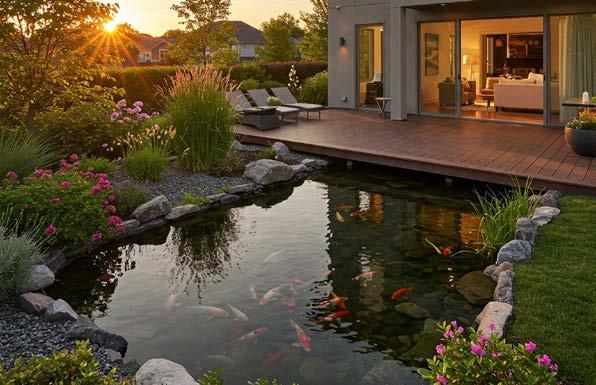
Koi Feeding and Care
“Feeding Koi isn’t just about food – it’s about connection. It’s a moment of trust, of observation, of care. Get it right, and your pond becomes a living dialogue.”
Martin Kammerer, Konishi Koi Farm
Seasonal Feeding Rhythms
Koi don’t eat the same way year-round – and they shouldn’t. Their metabolism is linked to water temperature. Feed in sync with the seasons for optimal health.

SPRING & SUMMER (Growth Season)
• Koi are active, social, and hungry
• Use high-protein pellets (40–45%) to support growth and color
• Opt for added vitamins and immune boosters
• Feed 2–3x per day – but only what they’ll eat in 5–10 minutes
Pro Tip: Clear leftover food immediately to avoid water pollution

FALL (Wind-Down Phase)
• Reduce protein, increase digestibility
• Focus on wheat germ-based or transitional seasonal food
• Drop to 1–2 feedings daily, smaller portions
• Preps koi for metabolic slowdown and winter resilience

WINTER (Dormant Season)
• Below 50°F = stop feeding entirely
• Koi digestion nearly halts – feeding can harm them
• If needed, use low-temp feeds sparingly (only above 46–50°F)
Pro Tip: Feed by thermometer, not by routine
Feeding Frequency & Quantity
Feeding is about quality and timing – not volume.
Spring – Summer 2–3x daily
Autumn 1–2x daily taper
Winter (<50°F)
What Not to Feed
None
What they eat in 5–10 min
Reduce portions gradually
Stop feeding altogether
Koi will nibble anything – but some things do more harm than good:
• Too much fat – digestion issues, fatty liver, obesity
• Expired feed – mold, toxins, intestinal disease
• Other animal food – wrong balance for Koi needs
• Raw vegetables or fruit – low nutrition, high pollution potential
• Overfeeding – cause of murky water and filter strain
Pro Tip: Store food in airtight, dry containers to preserve nutrients and avoid spoilage.
Signs of Discomfort: Know What to Watch For
Feeding time is also diagnostic time. Observe their behavior as much as their appetite.
Symptom
Lethargy or isolation
Loss of color
What it Might Mean
Stress, infection, poor water quality
Nutrient deficiency or early illness
Gasping at surface Low oxygen or gill issues
Loss of appetite First red flag – watch for patterns
Physical changes Look for spots, swelling, lesions, or white fuzz
If unsure, always consult a fish-savvy vet or aquatics specialist early.
Yvo’s Tip
“You’re not just feeding fish. You’re building trust. The better you observe, the sooner you catch problems. And the more your Koi will thrive – inside and out.“


“A healthy pond doesn’t need to be perfect – it needs to be consistent. The fish tell you everything, if you’re present enough to see it.”
Yvo de Wal, The Koi Partner
The Philosophy of Maintenance
Maintenance isn’t just about cleanup. It’s about balance. Clarity. Observing the rhythms of your pond and tuning in to what it needs. You don’t need daily intervention. But you do need routine. Here’s your Koi-friendly blueprint.
Weekly, Monthly & Seasonal Tasks
Weekly Rituals:
• Skim debris: Leaves, flowers, and pollen – gone before they sink.
• Observe behavior: Watch your Koi during feeding – look for changes.
• Quick equipment scan: Is the pump humming? Is water flow strong?
Monthly Checklist:
• Test the water: pH, ammonia, nitrites, nitrates (test kits or digital meters).
• Clean the filter system: Rinse biological and mechanical media.
• Inspect UVC units: Check for buildup, verify light functionality.
Seasonal Deep Care:
• Vacuum pond bottom (spring & fall) to remove settled sludge.
• Clean pump impellers and air stones.
• Trim aquatic plants.
• Inspect liners and edge seals.
Water Testing – Know Your Chemistry
Parameter
pH
6.5–8.5
Ammonia (NH₃) 0 ppm
Nitrites (NO₂) 0 ppm
Nitrates (NO₃) < 50 ppm
Outside this range? Stress, disease, biofilter issues.
Highly toxic – even trace amounts are dangerous.
Another invisible killer.
Safe in small amounts; excess = algae bloom risk.
Use test kits at least once a month. Go digital if you want greater speed and more accurate results.
Partial Water Changes – The Unsung Hero
Even with the best tech, water gets tired. Minerals deplete. Pollutants build. A regular water change resets the balance.
How Often & How Much:
• Every 2–4 weeks
• Change 10–20% of pond volume
• In high-load periods (summer, spawning), increase frequency
How to Do It Right:
• Use a siphon or vacuum to remove water from the bottom
• Refill gently to avoid temperature shock
• Add a dechlorinator if using tap water
• Avoid changing more than 30% unless necessary
Pro Tip: Never change water during heat waves or major weather shifts. Your Koi are already adapting – don’t double their stress.
Yvo’s
Tip
“Your pond’s not asking for perfection. It’s asking for attention. Weekly light touches and monthly habits will do more than panic-cleaning ever could.“

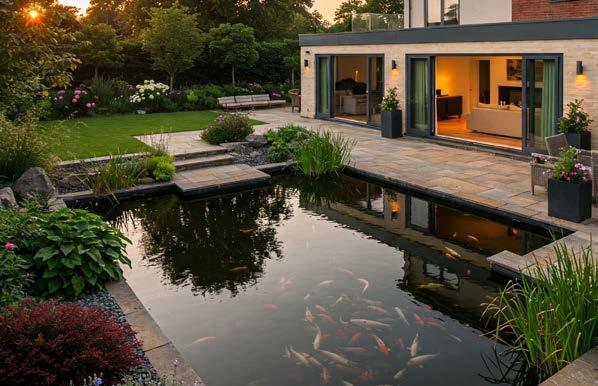
Common Mistakes to avoid 9
“You don’t need to do everything right. But you do need to stop doing the wrong things. The best Koi keepers aren’t perfect – they’re just observant.”
Martin Kammerer, Konishi Koi Farm
Mistake #1: Overcrowding the Pond
More Koi ≠ more joy. It’s a common rookie move – adding too many fish, too fast.
Why It’s a Problem:
• Skyrockets biological load – your filter can’t keep up
• Produces excessive ammonia, nitrites, and nitrates
• Increases stress, disease risk, and territorial aggression
What To Do Instead:
Stick to the rule of 1 Koi per 500 gallons as a starting point. Scale your stocking rate based on pond size and filtration power.
Mistake #2: Undersized Filtration
Your pond filter is not a suggestion – it’s your ecosystem’s foundation. Too small, and things spiral fast.
The Downside:
• Poor debris removal = cloudy water + decaying matter
• Biological load overwhelms the system
• Algae blooms, foul odors, and stressed Koi
Smart Strategy:
Always size 2–3x higher than your pond’s volume. Choose modular, upgradeable systems – especially if your herd grows.
Mistake #3: Poor Oxygenation
This is the silent killer. Dissolved oxygen is invisible, and oxygen levels drop as temperature rises, and at night when plants consume oxygen.
What to watch for:
• Gasping at the surface = low dissolved oxygen
• Foul odors from biological filters from anaerobic decomposition
• Hot weather = oxygen crashes = fish loss overnight
Fix It Fast:
Install an aerator like AquaOxy 450 or Atlantic Professional Aeration Kit. Ensure coverage across zones – not just a single air stone. Run it especially at night during summer.
Mistake #4: Incorrect Feeding
Feeding Koi is joyful – but careless feeding? That’s where problems bloom (literally).
Watch Out For:
• Overfeeding = rotting food ammonia spike
• Feeding when temps are too low digestion failure
• Using cheap, high-fat, or expired feeds
Feed Like a Pro:
• 2 – 3x / day in warm months, just enough for 5–10 minutes
• Use seasonal formulas: High-protein in summer, easily digestible in fall, none below 50°F
• Remove uneaten food immediately
Bonus Mistake: Inconsistency
Koi love rhythm. Sudden changes – water chemistry, feeding schedule, filter cleaning – create stress.
Keep a pond journal. Track temp, pH, behavior, maintenance. It’s not overkill – it’s insight.
Yvo’s Tip
“Mistakes are normal. It’s how quickly you notice – and what you do next – that makes the difference. Your Koi will tell you everything if you’re paying attention.“

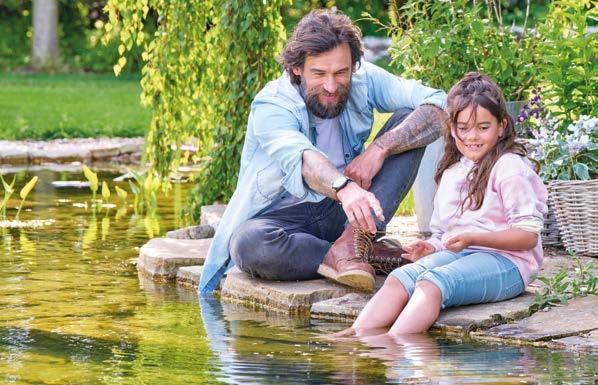
Final Thoughts & Contact
“You’re not just building a pond. You’re creating a place where water meets wonder – and where life flows a little slower.”
Martin Kammerer, Konishi Koi Farm
What’s Next?
Now that you’ve got the knowledge, it’s time to turn inspiration into action.
Step-by-step:
• Plan your pond with intention – think flow, function, and feeling
• Choose the right systems – let technology support nature
• Partner with professionals – get expert advice before you dig
Yvo’s Final Thoughts
“The beauty of a Koi pond isn’t just in how it looks – it’s in how it lives. And how it helps you live, too.”

Find your local dealer www.atlantic-oase.com/how-to-buy/ where-to-buy
Explore our pond solutions www.atlantic-oase.com/koi-experience
